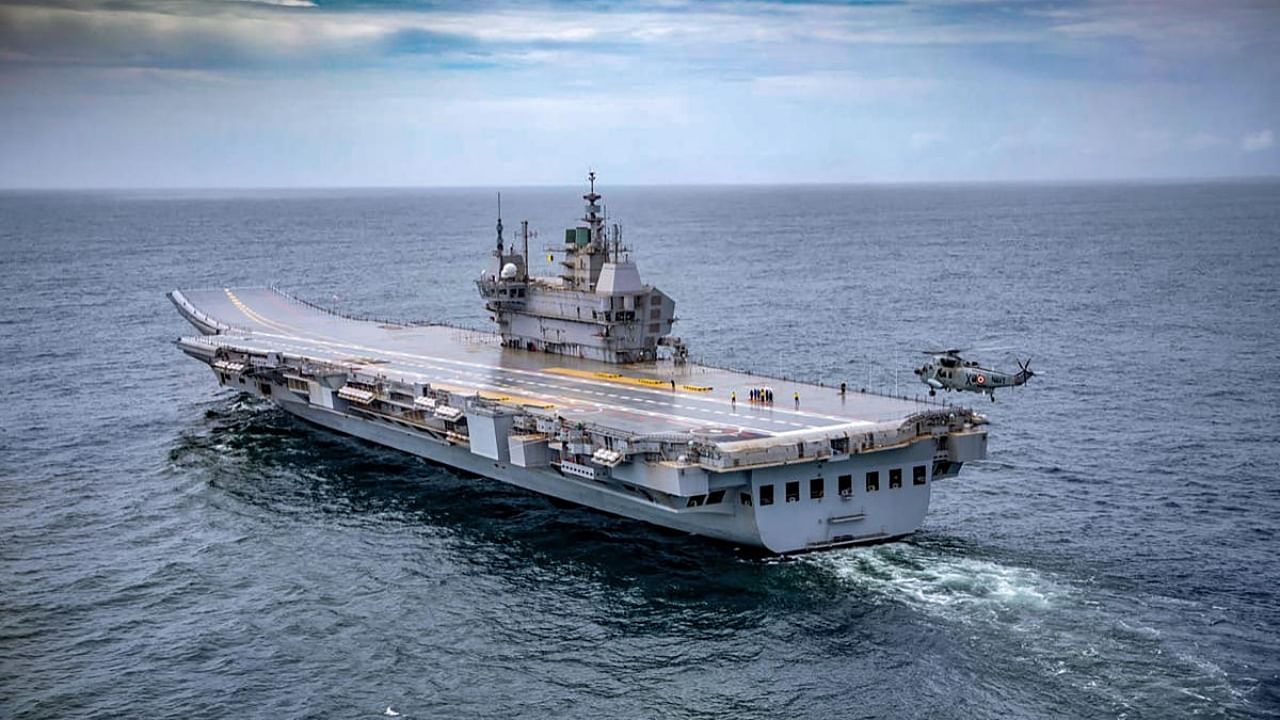
The 43,000-tonne flattop sitting quietly at the Cochin Shipyard in Kerala would not have materialised had it not been for a little-known steel factory in Odisha.
The first good news in India’s two-decade-long quest to construct an aircraft carrier came from the Steel Authority of India (SAIL) factory in Rourkela, located 300 km away from Bhubaneswar, which delivered a special quality military-grade steel — DMR-249A — for building Vikrant.
In the late 1990s, the Indian Navy acquired a Russian formula on military-grade steel, but had no idea about the process and chemistry. The Naval Material Research Laboratory and Heavy Engineering Corporation first gave it a go, but failed.
The Defence Metallurgical Research Laboratory and SAIL picked up the baton and, after a few years of trial and error, delivered top-quality steel to the shipyard, saving the country hundreds of crores.
The experience helped Indian steel factories manufacture such steel for indigenous construction of every warship and submarine. A second special type (DMR249z25) was created for Vikrant’s machine and engine rooms so that the chambers are protected from a torpedo hit.
The DMR249 steels are one of the military items that India wants to export, thanks to Project IAC or Indigenous Aircraft Carrier, now known as Vikrant.
This is not an isolated example. Several other Vikrant technologies such as the explosion-proof automatic energy lamp and transparent RF shielding now find applications outside the military.
But it has not been all smooth sailing in Vikrant’s 13-year-long journey in a civil shipyard, which had no prior experience in constructing a warship.
There is a serious serviceability issue with the onboard MiG-29K fighters, forcing the navy to look for alternatives.
Also, the Russian-origin combat aircraft (also flown by INS Vikramaditya) arrived years ahead, as a result of which a significant part of their designed life is lost even before the first one took off from Vikrant’s deck.
Despite such flaws, the commissioning of the home-grown aircraft carrier would be a milestone, catapulting India into an exclusive club of six nations — the US, the UK, China, France and Russia — that have the ability to design and build an aircraft carrier in excess of 40,000-tonne displacement.
And when she sails out following the Indian Navy doctrine of controlling the waters, Vikrant will change the power dynamics in the Indian Ocean Region.
The sheer volume of trade and oil passing through the Indian Ocean coupled with China’s growing belligerence has made the IOR the world’s most strategic waters. Operating two aircraft carriers (INS Vikramaditya will come out of refit after four months), will give an opportunity to the Indian Navy to live up to the promise of providing total security to other littoral counties.
“The Indian Navy follows a mission-based deployment approach and maintains warships in all crucial choke points for continuous surveillance.
“Having an additional aircraft carrier will provide deterrence, considering the growing strength of our neighbours,” said Vice Admiral S N Ghormade, the Vice Chief of the Naval Staff.
The reference is obvious. China’s People’s Liberation Army Navy (PLAN) is numerically the largest navy in the world, with an overall battle force of approximately 355 ships and submarines, including more than 145 major surface combatants.
The People’s Republic of China (PRC), says Pentagon in its latest annual report, is “speeding up the transition of its tasks from defence on the near seas to protection missions on the far seas...and towards the PRC’s goal of building a “strong and modernised naval force”.
In December 2019, the PLAN commissioned its first domestically built aircraft carrier, Shandong, which was launched in 2017 and completed sea trials during 2018-2019. The PRC’s second carrier is projected to be operational by 2024 and work is going on on the third carrier.
Against such an adversary, it’s imperative for India to go for a third carrier, envisaged nearly 40 years ago in the Indian Navy Perspective Plan 1985-2000. Subsequently, every plan reiterated the idea, but the government didn’t commit due to cost factors.
With the Cochin Shipyard successfully delivering Vikrant, it’s up to the Narendra Modi government to take a quick decision on the third carrier to ensure that the capabilities, built over the years after spending thousands of crores, don’t follow the same path as the submarine saga at the Mazgaon dock in the 1990s.
Madhu Nair, chairman and managing director of Cochin Shipyard Ltd, said the “ecosystem has to be leveraged for the country”.
“A new dry dock would be commissioned in early 2024 to take care of large vessels. We are strongly there for the potential IAC-2,” he added.
